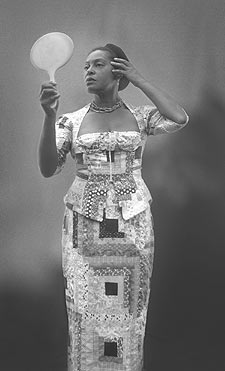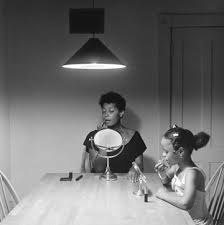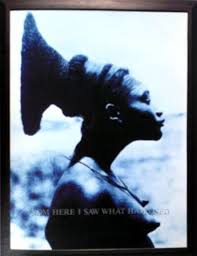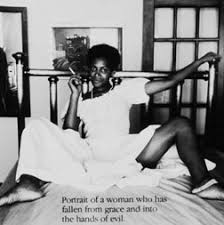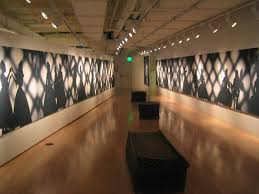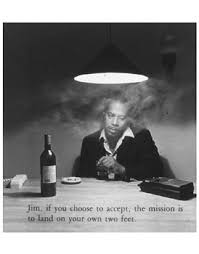Sunday, September 28, 2008
A Huey P. Newton Story and The Revolutionary Art of Emory Douglas
From an idea in 1989 to a stage play in 1996 to a film in 2002, A Huey P. Newton Story has been a labour of love and patience for Roger Guenveur Smith. Along the way as a stage play, it received numerous awards including two Drama Desk nominations, the Helen Hayes Award, two Obie Awards, two AUDELCO awards, and three NAACP Awards.
Now as a film it has been honoured around the world and has recently received two NAACP Image Award nominations for Outstanding Television Movie, Mini-Series or Dramatic Special and Outstanding Actor in a Television Movie, Mini-Series or Dramatic Special.
"A Huey P. Newton Story" was produced by Luna Ray Films and is an original production of BLACK STARZ! in association with PBS and the African Heritage Network.-
http://www.pbs.org/hueypnewton/about.html
SPIKE LEE AND ROGER GUENVEUR SMITH, along with PBS have teamed up to produce a well crafted one man show.
Huey P. Newton, was one of America's greatest revolutionaries (for some), or a "menace to American society" for others. It depends on who you are talking to at the time. For me his revolutionary actions brought about change in America.
His work in the Civil Rights movement to achieve equal access was one of, "By any means necessary". As the leader of the Black Panther Party of the 60's, Huey P. Newton was an advocate for the preservation of the black community. This was a turbulent time in American history.
As I viewed this film, emotions surfaced. I was born in the late 50's, so I was young during the "Movement". I remember the struggle during the late 60's. The media coverage of the Black Panther's painted a picture of a militant, violent, and subversive gang. There was little, if any coverage of the positive things the Panther's were doing for the Black community in Oakland.
Out of this turbulent time came some of the most prolific revolutionary artwork, in the form of the The Black Panther Newspaper. The work of one man, Emory Douglas. http://www.itsabouttimebpp.com/Emory_Art/Emory_Art_index.html
Now as a film it has been honoured around the world and has recently received two NAACP Image Award nominations for Outstanding Television Movie, Mini-Series or Dramatic Special and Outstanding Actor in a Television Movie, Mini-Series or Dramatic Special.
"A Huey P. Newton Story" was produced by Luna Ray Films and is an original production of BLACK STARZ! in association with PBS and the African Heritage Network.-
http://www.pbs.org/hueypnewton/about.html
SPIKE LEE AND ROGER GUENVEUR SMITH, along with PBS have teamed up to produce a well crafted one man show.
Huey P. Newton, was one of America's greatest revolutionaries (for some), or a "menace to American society" for others. It depends on who you are talking to at the time. For me his revolutionary actions brought about change in America.
His work in the Civil Rights movement to achieve equal access was one of, "By any means necessary". As the leader of the Black Panther Party of the 60's, Huey P. Newton was an advocate for the preservation of the black community. This was a turbulent time in American history.
As I viewed this film, emotions surfaced. I was born in the late 50's, so I was young during the "Movement". I remember the struggle during the late 60's. The media coverage of the Black Panther's painted a picture of a militant, violent, and subversive gang. There was little, if any coverage of the positive things the Panther's were doing for the Black community in Oakland.
Out of this turbulent time came some of the most prolific revolutionary artwork, in the form of the The Black Panther Newspaper. The work of one man, Emory Douglas. http://www.itsabouttimebpp.com/Emory_Art/Emory_Art_index.html
Friday, September 26, 2008
iona rozeal brown a3 -

"back in 1997, i read an article in Transitions written by Joe Wood. it was titled "The Yellow Negro," and subsequently introduced me to a group of Japanese youth called ganguro who darkened their skin and paid top dollar to have their hair permed into afros." - iona rozeal brown- http://www.spelman.edu/bush-hewlett/a3/artiststate.html
a3 blackface#21
In this exhibition, iona rozeal brown, one of the nation's most exciting artists, explores "afro-asiatic allegory" or "a3," a theme that she created after travelling to Japan in 2001. brown's work is informed by Ukiyo-e, the fashionable genre painting, also known as pictures of the floating world, that first appeared in 17th Century Japan in Edo (present day Tokyo). Appealing to a variety of buyers, the subjects of these woodblock prints range from historical topics to erotic themes. brown's work is also equally informed by hip-hop culture, blackface performance traditions and ganguro, the trend among Japanese high school girls of darkening one's skin.- Andrea D. Barnwell, Ph.D. Director,
Spelman CollegeVirtual Museum
Ganguro (ガングロ), literally Japanese "black-face"
http://www.japaneselifestyle.com.au/fashion/ganguro.html
Spelman CollegeVirtual Museum
Ganguro (ガングロ), literally Japanese "black-face"
http://www.japaneselifestyle.com.au/fashion/ganguro.html
a3 #7
a3 blackface #62

a3 blackface #63
Ganguro as a pop culture trend raises questions about the youth in Japan and there need to assimilate or mimic the black pop culture in America. This "afro-asiatic allegory" is a unique blend of two unrelated cultures. Iona Rozeal Brown paintings captures this cultural emersion/blend.
Anna Deveare Smith

Anna Deavere Smith is an actress, playwright, and author. She is a University Professor at New York University where she is appointed in the Tisch School of the Arts, with an affiliation at the New York University School of Law. She is currently working on a new project that will address global health care.
Smith was born in Baltimore, Maryland, the daughter of Anna (née Young), an elementary school principal, and Deavere Young Smith, a coffee merchant.[1] Smith is an alumna of Beaver College (now Arcadia University), graduating in 1971. She received her M.F.A. in Acting from the American Conservatory Theater in San Francisco, California.-http://en.wikipedia.org/wiki/Anna_Deavere_Smith
Actor Anna Deavere Smith on art in a time of war-2/2
Nayland Blake
Conceptual artist Nayland Blake's use of the character of a bunny rabbit in his artwork began as a way of discussing the stereotype of homosexual male promiscuity. When he began to investigate the complexity of identity, taking into account his gender and sexuality as well as his own biracial mix of African and European heritage, he started to see the bunny in the context of not only a pop cultural icon that could be subverted to express gay identity but also as the African American folk hero of the Uncle Remus tales. - Arnold Kemp
Artist Bio
Artist Website

"When 2 R in Love", 1996/7
Graphite and colored pencil on paper
9 x 12 inches each
3 part drawing

"Bunny Group, Happiness", 1996/7
Graphite and colored pencil on paper
12 x 9 inches each
4 part drawing
Arnold J. Kemp
Artist Website

"When 2 R in Love", 1996/7
Graphite and colored pencil on paper
9 x 12 inches each
3 part drawing
"Bunny Group, Two Holes", 1996/7
Graphite and colored pencil on paper
8 Sheets: 12 x 9 inches each
Graphite and colored pencil on paper
8 Sheets: 12 x 9 inches each

"Bunny Group, Happiness", 1996/7
Graphite and colored pencil on paper
12 x 9 inches each
4 part drawing
"Bunny Group, The Grind", 1996/7
Graphite and colored pencil on paper
7 Sheets: 12 x 9 inches each
Graphite and colored pencil on paper
7 Sheets: 12 x 9 inches each
Arnold J. Kemp
Isaac julien

Isaac Julien was born in 1960 in London, where he currently lives and works. After graduating from St Martin's School of Art in 1984, where he studied painting and fine art film, Isaac Julien founded Sankofa Film and Video Collective (1983–1992), and was a founding member of Normal Films in 1991.- http://www.isaacjulien.com/about
Isaac Julien has been involved, over the past ten years, with forging a new language around black representation, both as filmmaker and cultural critic. His exemplary body of work is informed by critical thinking around representation while not being solely theory driven. - blackculturalstudies.org
Artist Website
Films
Installations
Visual Archive
Lorna Simpson

Lorna Simpson (born 1960) Lorna Simpson was born in 1960 in Brooklyn, New York. She was trained at the School of Visual Arts in New York and then at the University of California, San Diego. She began her career as a documentary photographer and, though her work maintains its roots in the documentary photography tradition, addressing themes of cultural, political, and social significance, it has moved farther and farther from photography per se. She is best known for her series of life-size "portraits" of African-American women in which most of the models' facial features "twist" or problematize the image itself. An example is Necklines. In 2007, Simpson had a 20-year retrospective of her work at the Whitney Museum of American Art in her hometown of New York City -
http://www.learner.org/catalog/extras/wabios/simpson.html
Excerpt of Interview with Lorna Simpson by Siri Engberg and Sarah Cook
March 9, 1999
Her Works

Exploring Identity as a Problematic Condition
Carrie Mae Weems
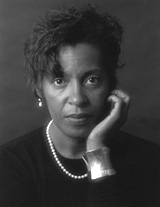
Artist Statement
"My responsibility as an artist is to work, to sing for my supper, to make art, beautiful and powerful, that adds and reveals; to beautify the mess of a messy world, to heal the sick and feed the helpless; to shout bravely from the rooftops and storm barricaded doors and voice the specificity of our historical moment." --Carrie Mae Weems
Carrie Mae Weems (born 1953) is an award winning photographer and artist. Her photographs, films, and videos have been displayed in over 50 exhibitions in the United States and abroad and focus on serious issues that face African Americans today, such as racism, gender relations, politics, and personal identity. She has said, "Let me say that my primary concern in art, as in politics, is with the status and place of Afro-Americans in our country."
http://en.wikipedia.org/wiki/Carrie_Mae_Weems
Artist Profile
Artist Links
Chicken Bones: A Journal For Literary & Artistic African American Themes
Gordon Parks

Gordon Parks (1912-2006, ) is an African American photographer, musician, poet, novelist, journalist, activist, and film director. He has been an important and creative force in all of these fields. He began his public career as a freelance fashion and personality photographer in Chicago, but his first substantial work came as a documentary photographer with the Farm Security Administration. He has also performed and as a jazz pianist. He directed a number of movies during the "Blaxploitation" phase of American cinema, though the films cannot be classified that way. He was a notable campaigner for civil rights in the US. He has also been the subject of film and print profiles (notably "Half Past Autumn" (2000)).


A Kansas Portrait
YouTube Videos
Masters of Photography - Gordon Parks
Interview with Gordon Parks
Documenting America: Photographer: Gordon ParksWashington, D.C. July and August 1942
Parks' works include:
Books:
A Choice of Weapons (1964) (autobiographical)
To Smile in Autumn (autobiographical)
Voices in the Mirror (autobiographical)
The Learning Tree (autobiographical)
Published compilations of his poetry and photography:
Gordon Parks: A Poet and His Camera
Gordon Parks: Whispers of Intimate Things
Gordon Parks: In Love, Moments Without Proper Names
Arias of Silence
Glimpses Toward Infinity
Films:
The Learning Tree (1969)
Shaft (1971)
Leadbelly (1976)
Solomon Northup's Odyssey (1984)
Flavio, Diary of a Harlem Family (1964)
The World of Piri Thomas (1968)
Shaft's Big Score (1972)
The Super Cops (1974)
Music:
Martin (1989) (ballet about Martin Luther King)
Moments Without Proper Names (1987)
Documentaries about or including Parks:
Soul in Cinema: Filming Shaft on Location (1971)
Passion and Memory (1986)
Malcolm X: Make it Plain (1994)
All Power to the People (1996)
Half Past Autumn: The Life and Works of Gordon Parks (2000)
Baadasssss Cinema (2002)
Soul Man: Isaac Hayes (2003)
An exhibition of his photography was held at the Norton Museum of Art in 1999.
Renee Cox

Cox, Renee
(1960- )
photographer
mixed-media artist
One of the most controversial African-American artists working today, Renee Cox has used her own body, both nude and clothe, to celebrate black womanhood and criticize a society she often views as racist and sexist.
http://www.reneecox.net/bio.html
As a photo artist, one of her exhibits created a stir in New York City. "Nude Female Jesus" at the Brooklyn Museum of Art. Mayor Rudi Giuliani call for the exhibit closed. According to THE NEW YORK TIMES, Mayor Giuliani, who has not seen the exhibition, called Cox's photograph "disgusting," "outrageous," and "anti-Catholic." http://www.artscope.net/NEWS/new02202001-3.shtml
Other Photos
Hott-en-tot
"Cleanse"
"Mother of Them All"
Saturday, September 20, 2008
Kara Walker
http://www.pbs.org/art21/artist/walker/index.html
Artist Biography



Kara Walker Interviews
http://www.moma.org/onlineprojects/conversations/trans_kwalker.html
Gallery Representing artist
Whitney Museum
History of the Whitney
http://www.whitney.org/www/collection/history.jsp
Kara Walker: My Complement, My Enemy, My Oppressor, My Love
http://www.whitney.org/www/exhibition/kara_walker/index.html
Artist Website
http://learn.walkerart.org/karawalker
Artist Biography
Kara Walker was born in Stockton, California in 1969. She received a BFA from the Atlanta College of Art in 1991 and an MFA from the Rhode Island School of Design in 1994. The artist is best known for exploring the raw intersection of race, gender, and sexuality through her iconic, silhouetted figures.-www.pbs.org
Her retired father is a formally educated artist, a professor, and an administrator. Her mother worked as an administrative assistant and was inspired by her family to reveal her own artistic talents. Walker's education includes an MFA at Rhode Island School of Design in Painting/Printmaking, and a BFA in Painting/Printmaking at Atlanta College of Art.
Some of Walker's exhibitions have been shown at The Renaissance Society in Chicago, the Museum of Modern Art in New York, the San Francisco Museum of Modern Art, the Walker Art Center in Minneapolis, the Modern Art Museum of Fort Worth, and the Museum of Contemporary Art in Chicago
-http://en.wikipedia.org/wiki/Kara_WalkerWikipedia
Her retired father is a formally educated artist, a professor, and an administrator. Her mother worked as an administrative assistant and was inspired by her family to reveal her own artistic talents. Walker's education includes an MFA at Rhode Island School of Design in Painting/Printmaking, and a BFA in Painting/Printmaking at Atlanta College of Art.
Some of Walker's exhibitions have been shown at The Renaissance Society in Chicago, the Museum of Modern Art in New York, the San Francisco Museum of Modern Art, the Walker Art Center in Minneapolis, the Modern Art Museum of Fort Worth, and the Museum of Contemporary Art in Chicago
-http://en.wikipedia.org/wiki/Kara_WalkerWikipedia



Kara Walker Interviews
http://www.moma.org/onlineprojects/conversations/trans_kwalker.html
Gallery Representing artist
Whitney Museum
History of the Whitney
http://www.whitney.org/www/collection/history.jsp
Kara Walker: My Complement, My Enemy, My Oppressor, My Love
http://www.whitney.org/www/exhibition/kara_walker/index.html
Artist Website
http://learn.walkerart.org/karawalker
Thursday, September 18, 2008
Saul Williams
Hey Saul:
As a Black Woman and Mother of a daughter , I have problems with the way black women are depicted by mainstream (white) media. But I am appalled at the Black media's depiction of black women. The degrading images of the half naked women being treated as devalued objects of pleasure. Images leading people to the conclusion that all Black women expect to be treated in a manner of disrespect.
This quote really baffles me:
"There is no true hatred of women in Hip Hop. At the root of our nature we inherently worship the feminine. Our overall attention to the nurturing guidance of our mothers and grandmothers as well as our ideas of what is sexy and beautiful all support this."
There is a high degree of hatred toward the women in Hip Hop. There has to be, because what other reason would there be for the objectification and denigration of these women.
You say you worship the feminine. How is that possible, when the images are of half naked women in compromising positions? To worship these women, they should be the object of adoring reverence or regard, not sexual lust.
The number of songs that refer to women as "bitches and whores" being spewed in between the I want to "do you" lyrics, creates a culture of people who have disregard for the value of women.
There are some who may say they are just words, this may be true, but these words shape the structure of the next generation. Thus creating a generation who continue to perpetuate this denigration.
What happened to the love songs. Where have they gone. Would you want your mother or grandmother to be the object of these lyrics.
Why does every woman have to be a bitch or a whore? How do we justify this type of ideology?
So, Saul I refuse to accept the idea that this is just art and "At the root of our nature we inherently worship the feminine". If that's correct, let's see female family members of the Rappers in their videos.
As a Black Woman and Mother of a daughter , I have problems with the way black women are depicted by mainstream (white) media. But I am appalled at the Black media's depiction of black women. The degrading images of the half naked women being treated as devalued objects of pleasure. Images leading people to the conclusion that all Black women expect to be treated in a manner of disrespect.
This quote really baffles me:
"There is no true hatred of women in Hip Hop. At the root of our nature we inherently worship the feminine. Our overall attention to the nurturing guidance of our mothers and grandmothers as well as our ideas of what is sexy and beautiful all support this."
There is a high degree of hatred toward the women in Hip Hop. There has to be, because what other reason would there be for the objectification and denigration of these women.
You say you worship the feminine. How is that possible, when the images are of half naked women in compromising positions? To worship these women, they should be the object of adoring reverence or regard, not sexual lust.
The number of songs that refer to women as "bitches and whores" being spewed in between the I want to "do you" lyrics, creates a culture of people who have disregard for the value of women.
There are some who may say they are just words, this may be true, but these words shape the structure of the next generation. Thus creating a generation who continue to perpetuate this denigration.
What happened to the love songs. Where have they gone. Would you want your mother or grandmother to be the object of these lyrics.
Why does every woman have to be a bitch or a whore? How do we justify this type of ideology?
So, Saul I refuse to accept the idea that this is just art and "At the root of our nature we inherently worship the feminine". If that's correct, let's see female family members of the Rappers in their videos.
Monday, September 15, 2008
The Kehinde Wiley Exhibit @ The Smithsonian
On Sunday September 14th I decided to take a bike ride to the Smithsonian's National Portrait Gallery in D.C. to actually see Kehinde Wiley's art in person. I have been researching him on the net and wanted to see his work up close and personal.
As I walked in to the exhibit, it was totally monumental!! Even thought I was aware his art was life size, I never imagined larger than life.
I created a series of audio blogs as I walked through the experience. I was so overwhelmed by the experience, I am not sure the audio blogs do it justice. For the lack of a better word "Awesome".
Gloria -
As I walked in to the exhibit, it was totally monumental!! Even thought I was aware his art was life size, I never imagined larger than life.
I created a series of audio blogs as I walked through the experience. I was so overwhelmed by the experience, I am not sure the audio blogs do it justice. For the lack of a better word "Awesome".
Gloria -
Saturday, September 13, 2008
Kehinde Wiley

Kehinde Wiley, a fresh new artist, is crossing boundaries and creating a buzz in the art world. His use of old, infused with new, creates what is being called "Hip-Hop Portraiture". Wiley's process is simple. He combs the streets for young African American men as his models. He then gives them art history books to view, and ask them to chose a painting they like. He then poses them in position that resemble the subject in the book. From there, Wiley creates a life size painting, and a life image transformed.

Three Graces
Kehinde Wiley, 2005
Oil and enamel on canvas
182.9 x 423.8 cm (72 x 96 in)
Hort Family Collection, courtesy Roberts & Tilton, Los Angeles, California
© Kehinde Wiley

Ice T
Oil on canvas
243.8 x 182.9 cm (96 x 72 in)
Private collection, courtesy Rhona Hoffman Gallery
© Kehinde Wiley
Big Daddy Kane
Kehinde Wiley, 2005
Oil on canvas
243.8 x 182.9 cm (96 x 72 in)
John Morrissey,
courtesy of Roberts & Tilton,
Los Angeles, California
Kehinde Wiley, 2005
Oil on canvas
243.8 x 182.9 cm (96 x 72 in)
John Morrissey,
courtesy of Roberts & Tilton,
Los Angeles, California
© Kehinde Wiley
LL Cool J
Kehinde Wiley, 2005
Oil on canvas
243.8 x 182.9 cm (96 x 72 in)
LL Cool J
© Kehinde Wiley
The National Portrait GalleryKehinde Wiley, 2005
Oil on canvas
243.8 x 182.9 cm (96 x 72 in)
LL Cool J
© Kehinde Wiley
http://www.npg.si.edu/
Thursday, September 11, 2008
African American Pop Culture Assimilation

- One word to describe the topic
Assimilation
Kennedy, Lisa (Mar2008)The Storyteller Essence; , Vol. 38 Issue 11, p183-183, 1p, 1 color
- a brief summary of how this topic relates to your work or how it could effect it
African American youth are large consumers of media and the messages it conveys. These messages have the ability to create a generation of clone like beings.
My research is in the area of the power of the visual to influence black youth, creating a culture resembling a Borg-like generation of assimilation.
Filmmaker Spike Lee's "Bamboozled" and "School Daze" explored the concept of assimilation in the African American community.
I have been researching the impact the media has African American youth, and how it is creating an assimilated culture.
Subscribe to:
Posts (Atom)











